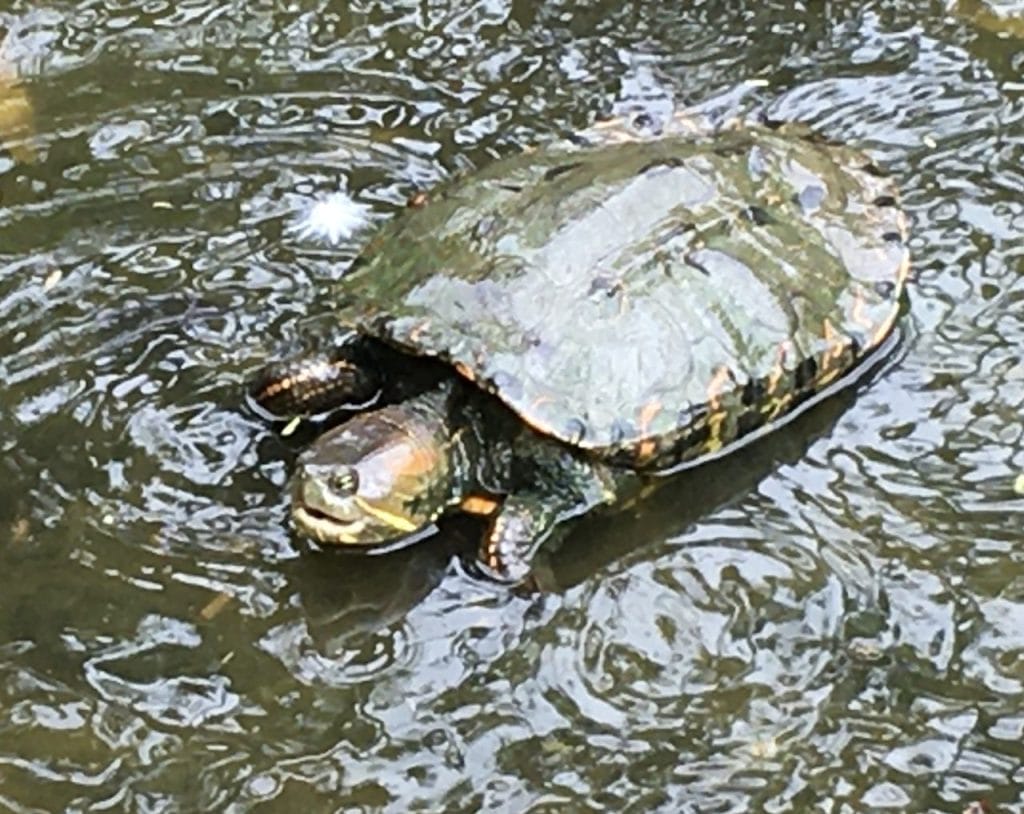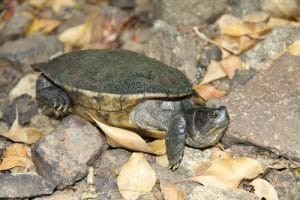Trachemys callirostris (Colombian Slider)
Home > Turtle Database > Trachemys callirostris (Colombian Slider)

Trachemys callirostris, also known as the Colombian slider, is a freshwater turtle found in parts of South America. It’s closely related to the popular red-eared slider and shares a similar look, though it has its own unique traits and range.
Native To These Regions
Atlántico (Colombia), Bolívar (Colombia), Cesar (Colombia), Córdoba (Colombia), La Guajira (Colombia), Magdalena (Colombia), Sucre (Colombia), Zulia (Venezuela)Native Turtle Species Map – Find Turtles by Region
Scientific Classification
Kingdom: Animalia
Phylum: Chordata
Class: Reptilia
Order: Testudines
Family: Emydidae
Genus: Trachemys
Species: Trachemys callirostris
Common Names
Colombian Slider
Venezuelan Slider
Callirostris Slider
This Hilarious Turtle Book Might Know Your Pet Better Than You Do
Let’s be real—most turtle care guides feel like reading a textbook written by a sleep-deprived zookeeper.
This one’s not that.
Told from the snarky point of view of a grumpy, judgmental turtle, 21 Turtle Truths You’ll Never Read in a Care Guide is packed with sarcasm, sass, and surprisingly useful insights.
And hey—you don’t have to commit to the whole thing just yet.
Grab 2 free truths from the ebook and get a taste of what your turtle really thinks about your setup, your food choices, and that weird plastic palm tree.
It’s funny, it’s honest, and if you’ve ever owned a turtle who glares at you like you’re the problem—you’ll feel seen.
Identification
Description
This turtle has an olive to brownish carapace, often with faint markings or streaks. The plastron is yellow with dark blotches. One of its key features is a yellow stripe behind the eye that continues down the neck. The skin is dark with yellow striping.
Sexual Dimorphism
Males are smaller and have longer front claws and thicker tails. Females are larger with shorter claws and slimmer tails.
Check more turtles from the Trachemys genus
Native Origin and Distribution
Geographical Range
Found in northern Colombia and northwestern Venezuela, mainly in the Magdalena River basin and nearby wetlands.
Preferred Habitat
They live in slow-moving rivers, swamps, marshes, and ponds with soft bottoms and lots of vegetation. These turtles prefer warm, shallow waters and need sunny spots for basking.
Behavior
Feeding Habits
They are omnivores. Juveniles eat more meat—like insects, fish, and carrion—while adults include more plant matter such as aquatic vegetation and fruits.
Predators
Eggs and hatchlings are preyed on by birds, raccoons, and fish. Adults may fall victim to large birds of prey or humans.
Reproduction
Breeding Season
Usually breeds in the dry season when water levels are lower. Nesting follows shortly after mating.
Reproductive Method
Females lay several clutches per year, with each clutch having 5–20 eggs. Eggs are buried in sandy or soft soil near water. Hatchlings emerge after about 60–75 days.
Conservation
Extinction Status
Currently listed as Not Evaluated by the IUCN.
Threats
Major threats include habitat destruction, pollution, and capture for the pet trade or food markets.
Conservation Measures
Some local efforts aim to protect nesting areas. Laws exist in parts of their range to limit commercial collection, though enforcement is weak.
Economic Importance
They are sometimes sold in local pet markets and occasionally used as food. They’re also part of the regional pet trade due to their appearance and similarity to other popular sliders.
Interesting Facts
Trachemys callirostris can live over 20 years in the wild.
They often bask in large groups, sometimes piling on top of each other.
Though similar to the red-eared slider, they lack the red patch and have more yellow striping.

About Author
Muntaseer Rahman started keeping pet turtles back in 2013. He also owns the largest Turtle & Tortoise Facebook community in Bangladesh. These days he is mostly active on Facebook.














